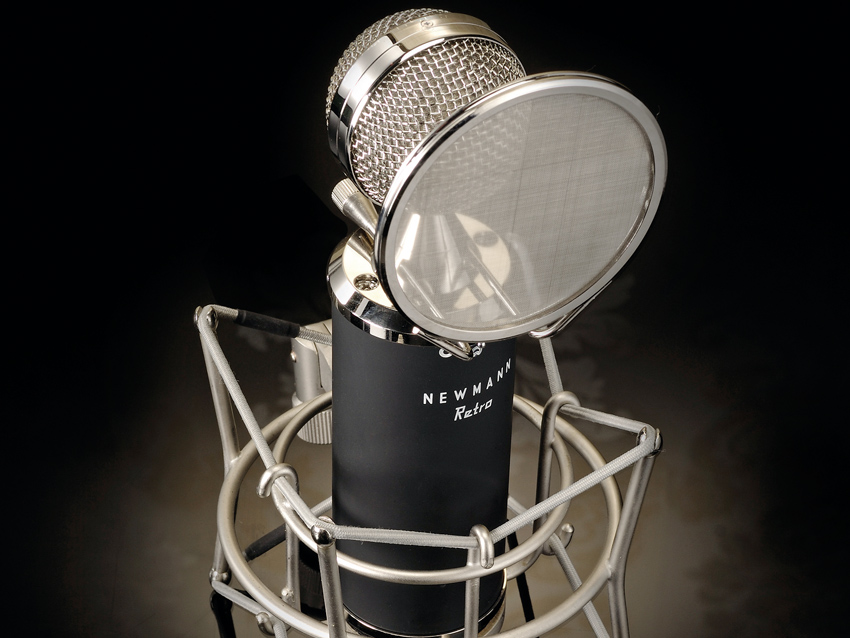MusicRadar Verdict
If you're hunting for a high-quality mic that costs less than £1,000, you'd be foolish to ignore this beauty.
Pros
- +
Great, versatile sound. High-quality build. Hand-built in the UK.
Cons
- -
Problem with the suspension mount.
MusicRadar's got your back
Once out of its aluminium case and soft pouch, this mic feels substantial. The rubberised barrel, chromed capsule surround and connector plate are well-made and we like the overall look - classic rather than simply retro.
The first thing we wanted to do was fit the rather novel pop-shield. This is a relatively simple task: two well fitting chromed nuts clamp the collar onto the base of the capsule. It looks good and is very sturdy.
The mic screws easily onto the suspension mount and it's firm enough that you can put it horizontal without any 'sag'. However, once on a stand, the nut that tightens it isn't so hot. When the stand is near vertical it's fine, but the nearer you go to the horizontal the harder it gets to hold it firm. It slipped on us a couple of times and we had to resort to pliers to get it to stay.
The connection to the power supply is made via a substantial cable - a sensibly non-retro 7-pin XL. The audio out from the supply is a standard 3-pin XLR.
In use
So, how does it sound? Out first recording was of a thin-sounding 12-string acoustic. Through a Focusrite ISA 215, there was plenty of mid-range detail and some very pleasing depth in the low end.
Next up was a 6-string with a bit of a bass boom. Instead of moving the mic we tried the roll-off, which worked well, removing the speaker flap but leaving the bass. Trying different positions and polar patterns gave me the results we expected, and whether it was finger picking or plectrum playing the detail was excellent.
Then it was on to percussion. Shakers were crisp but not too bright, bongos had good presence and depth, while some temple bells, which are always useful for showing up a dodgy capsule, sounded beautiful - clean and transparent.
Want all the hottest music and gear news, reviews, deals, features and more, direct to your inbox? Sign up here.
Voices were next. We started with backing vocals, because layering vocal parts always shows up any annoying peaks in frequency response. We recorded a 3-part harmony, two of each close with a cardioid pattern and the third on omni.
The results were great. Lovely depth and warmth, no nasty sibilance and very responsive to EQ afterwards.
We then recorded a female lead, which on an AKG 414 sounded a bit thin. With the Newmann, the high-end was there but the mid-range detail was also great. And again, the depth was the real winner.
Last up was a male lead, a hard attacking voice with a lot of power and an aggressive rap-style delivery. The Newmann took it in its stride, delivering plenty of depth and presence. The pop-shield is great, adding very little colouration and ensuring that there's not a pop to be heard.
Summary
So, does the Newmann out-perform its rivals? To a degree, yes. A lot of modern valve mics have a hyped high-end which sounds good solo but doesn't work in the mix. The Newmann has depth; it responds well to EQ and compression and adds some real warmth to the sound.
In fact, the whole package is well thought-out. It looks great and, leaving aside our gripe about the suspension mount, we can't really fault it at this price.
